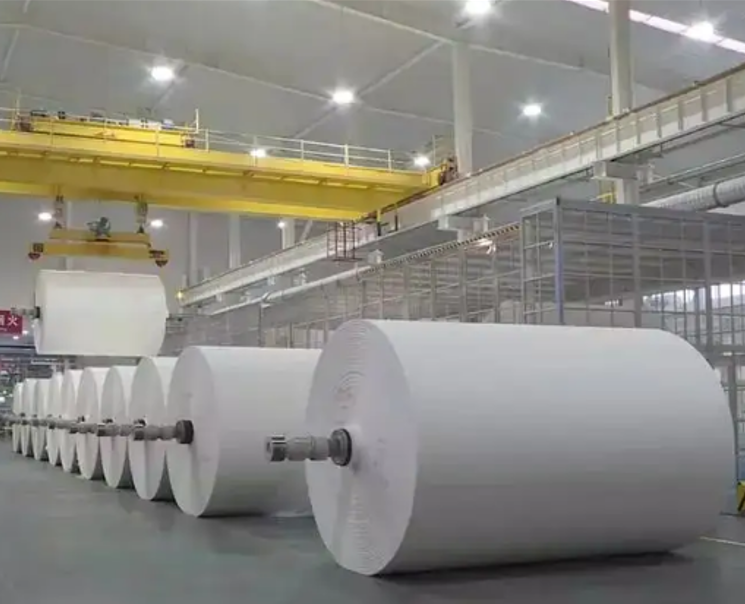The quality of facial tissue, toilet tissue, and paper towel is intricately tied to the various stages of their production process. Among these, pulping technology stands as a pivotal factor, significantly shaping the final attributes of these paper products. Through the manipulation of pulping intensity and process variables,the main characteristics such as strength, softness, absorbency, and more, can be effectively improved.
Below is an in-depth exploration of how pulping technology and selection impact the quality of these papers.
1. Enhancing Filler Retention: The Balance Between Ash Content and Pulping Intensity
In the production of facial tissue, toilet tissue, and paper towel, a lack of sufficient ash content often leads to reduced filler retention. By increasing the pulping intensity, the pore structure of the paper sheet tightens, enabling better retention of fillers within the pulp. This enhancement is particularly vital for products with high filler content, as it boosts paper strength and uniformity.
2. Preventing Sheet Detachment from the Cylinder: Strengthening Adhesion
Sheet detachment from the drying cylinder during production can be attributed to inadequate adhesion. Enhancing pulping intensity compacts the paper sheet, thus improving its adherence to the cylinder and ensuring smooth production.
Mother Jumbo Roll For Coverting Facial Tissue.
3. Managing Adhesion to Drying Cylinder: Paper Structure Optimization
Excessive adhesion to the drying cylinder may result from too many fine fibers in the pulp, compacting the paper structure. Reducing pulping intensity leads to a more even fiber distribution, improving air permeability and flexibility, thereby preventing adhesion issues.
4. Pulp Freeness and Paper Defects: Maintaining Optimal Pulping Intensity
Excessive pulp freeness can cause defects like sheet detachment and creases. Ensuring adequate refining during pulping, alongside other process parameters within the desired range, is crucial to prevent these issues and maintain paper flatness and uniformity.
5. The Suitability of Waste Paper Spots and Pulping Equipment
Waste paper spots during pulping often stem from insufficient fiber disintegration in the repulper. Upgrading repulper capacity and considering slush pulping can address this. Using pulping machines solely as disintegrators may not yield desired results, highlighting the importance of appropriate equipment selection.
6. Bulk and Softness Preservation: Adjusting Pulping Intensity
Bulk, a critical indicator of paper softness, can be compromised by excessive pulping intensity, which compacts the paper structure. To enhance bulk and comfort, reducing pulping intensity allows for a more open structure, preserving softness.
High quality virgin wood pulp parent roll tissue paper jumbo roll.
7. Boosting Burst Strength: The Role of Pulping Intensity
Burst strength, crucial for overall paper durability, is closely linked to fiber bonding strength. Adjusting pulping intensity can significantly enhance this bonding, improving resistance to breakage, especially in high-strength products.
8. Calendering Defects and Pulping Uniformity
Black spots or blemishes on paper surfaces post-calendering may result from poor formation. Uniform fiber distribution during pulping directly impacts pulp spreading on the wire. Optimizing pulping techniques improves formation quality, preventing such defects.
9. Thickness and Pulping Intensity: An Inverse Correlation
Paper thickness inversely correlates with pulping intensity. As pulping progresses, fibers become finer, reducing paper thickness. Controlling thickness necessitates attention to pulping intensity changes to avoid over-refining, which can detract from user experience.
10. Paper Wrinkling and Formation Quality: Enhancing Structure through Pulping
Wrinkles often reflect uneven drying, indicating paper web unevenness. Reducing pulping intensity and refining the formation process improves structure distribution, minimizing wrinkles and enhancing paper flatness and appearance.
11. Water Carryover Mitigation through Pulping Adjustment
Excessive water in finishing rolls can crush them. Reducing pulping intensity and increasing pulp temperature reduces water carryover, protecting rolls and ensuring a smooth paper surface.
12. Addressing Curling in Paper Products
Curling is a prevalent issue. Increasing short fibers or decreasing pulping intensity can alleviate curling, maintaining paper flatness.
13. Long Fiber Content and Formation Quality: Pulping Intensity Optimization
Paper formation quality issues may arise from inadequate drainage or excessive long fibers. While increasing pulping intensity can improve formation, optimal results demand reducing long fiber use and refining pulping techniques.
14. The Impact of Pulp Selection
The choice of pulp significantly affects paper quality. Virgin pulp typically offers superior strength and softness, while recycled pulp emphasizes environmental sustainability. Chemical pulps provide high brightness and strength, suitable for high-quality products, whereas mechanical pulps offer cost-effectiveness at the expense of some quality attributes.
Virgin Pulp: Known for its strong fibers and high softness potential, virgin pulp enhances durability and user comfort in Parent Tissue Jumbo Roll.
RecycledPulp: Promotes environmental friendliness but may require additional processing to match virgin pulp quality, impacting production costs and final product attributes.
Chemical Pulps: Their brightness and strength make them ideal for premium paper products, enhancing overall appearance and performance.
Mechanical Pulps: Cost-effective but may compromise brightness and softness, suitable for budget-friendly options where these attributes are less critical.
Conclusion
Pulping technology and pulp selection are fundamental in producing high-quality facial tissue, toilet tissue, and kitchen paper. By meticulously controlling pulping intensity and selecting appropriate pulp types, various paper characteristics can be effectively tuned. Mastery over these aspects not only upgrades product quality but also bolsters production efficiency, catering to diverse market demands.
Post time: Apr-08-2025



